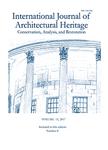版权所有:内蒙古大学图书馆 技术提供:维普资讯• 智图
内蒙古自治区呼和浩特市赛罕区大学西街235号 邮编: 010021

作者机构:Istanbul Tech Univ Fac Architecture Dept Architecture Istanbul Turkey Mimar Sinan Fine Arts Univ Fac Architecture Dept Architecture Istanbul Turkey
出 版 物:《INTERNATIONAL JOURNAL OF ARCHITECTURAL HERITAGE》 (Int. J. Archit. Herit.)
年 卷 期:2020年第14卷第4期
页 面:605-629页
核心收录:
学科分类:08[工学] 0813[工学-建筑学] 0814[工学-土木工程]
基 金:Istanbul Technical University Coordinatorship of Scientific Research Projects Istanbul
主 题:Architectural documentation cultural landscape dam Dereuzunyerodemis rural heritage traditional construction techniques vernacular architecture
摘 要:The village of Dereuzunyer located in the Rahmanlar Valley of the Kucuk Menderes Basin is a settlement that is a natural extension of a topography shaped by a joint contribution of culture and nature. It has preserved the authenticity and integrity of its traditional rural fabric and gives detailed information about the architectural approach, building technology, construction techniques, landscape features and traditional craftsmanship of past rural life. While some of the cultural assets in the settlement containing detailed information about the rural lifestyle of the past have survived to date despite the harsh natural conditions, the remainder have been neglected, become dilapidated, and fallen into ruin over time due to lack of maintenance by the local people because of rumors about the possible dam project and expropriations in progress. After completion of the Rahmanlar Dam in 2019, the cultural landscape values of Dereuzunyer will be lost irretrievably. This article aims to make a contribution to creating awareness about avoiding such losses, not only by introducing the non-renewable values of Dereuzunyer, by documentation of its historical development, its traditional architecture, its traditional building types, its construction techniques, and its plan and facade features, but also by promoting and interpreting its lost cultural heritage.